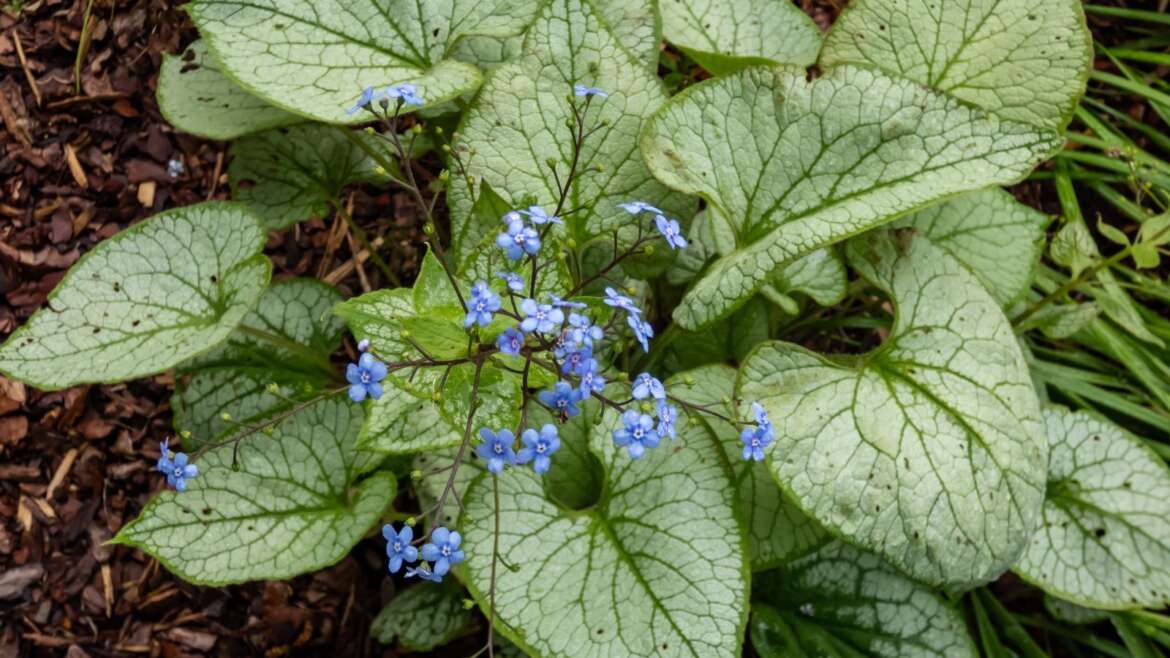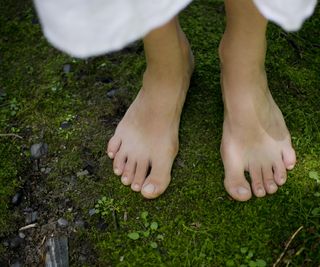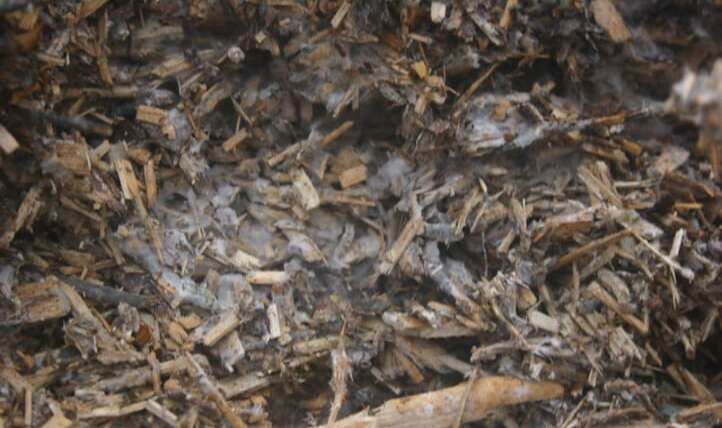Hostas are a gardening staple. Like blue jeans—they’re consistently in style, and they fit in pretty much anywhere. You just can’t mess them up.
Hostas are incredibly tough: I’ve seen them roasting in the median of a six-lane highway, getting covered in gravel by an oblivious snowplow driver, and being demolished by deer and slugs. And yet, they persist, happily sending up stalks of lavender blooms and fresh foliage year after year.
Yet, I’m utterly bored of hostas. I fully acknowledge that plenty of gardeners appreciate these faithful perennials, but there are loads of other hardy plants that tolerate both sun and shade with ease, are ignored by slugs and wildlife, and have large, fantastic foliage. Let’s dig in, and learn about a few hosta alternatives.
Siberian Bugloss
It is shade-tolerant and has a mounding growth habit.
Brunnera macrophylla, also called Siberian bugloss, has fuzzy leaves that are unappealing to deer, rabbits, and slugs. The roughly textured leaves, combined with its tolerance of shade and mounding growth habit, make it an excellent alternative to traditional hosta varieties.
Siberian bugloss sports flashy green and silver leaves that really light up a dark garden corner. Come spring and early summer, wispy sprays of delicate pale blue flowers form a wispy cloud atop this clumping perennial.
Siberian bugloss is an easy-to-grow groundcover that spreads slowly via rhizomes and freely self-sows. Its speckled, heart-shaped leaves are easily recognizable, making unwanted seedlings simple to identify and remove in the spring. This plant thrives in moist, organic-rich soil and benefits from occasional mulching with leaf mold or shredded bark to keep the soil cool and moist, though it doesn’t require supplemental fertilizer.
Umbrella Plant
 These plants thrive in moderate to wet soil.
These plants thrive in moderate to wet soil.
Native to the streambanks and moist woodlands of Oregon and northern California, Darmera peltata, known as umbrella plant or Indian rhubarb, thrives in moderate to wet soils.
It prefers dappled shade but will tolerate full sun if kept consistently watered. Pair umbrella plants with turtlehead and other moisture-loving plants in rain gardens.
In late spring, before foliage really unfurls, thick stems emerge and display panicles of white and pink flowers. Like some of the larger hosta cultivars, umbrella plants can grow to be several feet in width and feature big, broad leaves. Leaves turn a bold red in the fall, unusual for an herbaceous perennial. This plant is a colorful and water-tolerant native hosta alternative.
Lady’s Mantle
 These grow on any soil type, requiring very little maintenance.
These grow on any soil type, requiring very little maintenance.
Lady’s mantle is a clump-forming perennial with velvety-soft, scallop-shaped leaves. Tiny hairs are so densely packed on the foliage that water droplets will bead up on the leaves, giving the plant a sparkly appearance after rain or dew.
The light green leaves beautifully complement the sprays of lime-yellow flowers that emerge mid-summer. This plant’s soft, mounded growth habit looks lovely when planted in front of tall, upright perennials like bearded irises and garden phlox.
Another great hosta alternative, lady’s mantle has no specific soil requirements and grows easily in sun or shade. This plant requires little maintenance aside from pruning away any old dead foliage in early spring and ensuring it has plenty of water during the hottest weeks of summer.
This hardy plant is easily propagated by dividing healthy, mature plants in late fall or very early spring. Lady’s mantle is also easy to start from seed. This perennial freely self-sows to the point of being invasive in some climates. Seedlings are easily recognizable and can be pulled up if you aren’t looking for more volunteers.
Lungwort
 These perennials grow at a slow pace, preferring moderate moisture levels.
These perennials grow at a slow pace, preferring moderate moisture levels.
Remarkably hardy for such a pretty little plant, lungwort thrives across a huge range of growing zones (USDA Zones 3-9). Frequently called by its botanical name, Pulmonaria, these perennials feature mottled, silvery leaves and small pink and blue flowers that open in early spring. They prefer moderate moisture levels and will grow easily in most soil types.
Lungworts grow at a relatively slow pace. After flowering, remove old, faded leaves and divide mature plants every few years in the fall. Like hostas, the clumping growth habit and short stature make lungworts the perfect alternative for planting under larger shrubs and along shady pathways.
I have several clumps of ‘Raspberry Splash’, which displays lovely pink flowers that slowly fade to purple, then blue. They flourish despite being dug up and relocated several times (a habit of mine!).
Wild Ginger
 These plants mostly prefer slightly acidic soil that is also rich in organic matter.
These plants mostly prefer slightly acidic soil that is also rich in organic matter.
Not to be confused with culinary ginger (Zingiber officinale), wild ginger (Asarum canadense) is a North American perennial known for its hardiness and shade tolerance. Wild ginger is a slow-growing groundcover that features attractive, heart-shaped leaves and inconspicuous, burgundy-brown flowers.
This plant’s dense root systems not only smell great (like ginger!), but also make it an effective groundcover. Wild ginger can be propagated through seeds or rhizomes.
Wild ginger prefers moist, slightly acidic soil that is full of rich organic matter. To mimic its native woodland habitat, gardeners should plan to add plenty of finished compost and leaf mulch around the planting site. Pair this plant with foamflower and ferns for a native shade garden.
This native plant is a host to pipevine swallowtail butterflies, yet is unappealing to deer and rabbits. As the perfect hosta alternative or companion, wild ginger grows happily in full shade.
Leopard Plant
 These are low-maintenance perennials, thriving in partial to full shade with just enough moisture.
These are low-maintenance perennials, thriving in partial to full shade with just enough moisture.
Leopard plants, with their striking yellow blooms, stand out among the abundance of pink and purple shade plants. This easy-to-care-for perennial forms clumps of dark green to burgundy leaves with purple undersides. Starting in mid-summer, bright yellow daisy-like flowers rise from the foliage, attracting bees and butterflies.
Frequently called by its botanical name, Ligularia, leopard plant thrives in partial to full shade with ample moisture. It dislikes dry soil and direct sunlight, and it will wilt if hit with too much of either. In warm climates, healthy leopard plants will naturally sag a little by mid-afternoon, but usually perk up by evening. If they don’t recover by day’s end, relocate them to a cooler spot and water more frequently.
Site leopard plants in rain gardens or along pond edges, where they’ll receive plenty of moisture. For a high-impact blue and yellow garden, consider planting them with great blue lobelia and blue flag iris.
Coral Bells
 They grow well in both sun and shade.
They grow well in both sun and shade.
If you like hostas because of their foliage, buckle up and brace yourself for the painter’s palette of Heuchera varieties. There are more than 50 species of Heuchera, commonly called coral bells, with dozens of different cultivated varieties.
Tidy clumps of scallop-shaped foliage sprout in shades of green, chartreuse, burgundy, plum, warm copper, or near-black purple. Tiny, bell-shaped flowers, typically pink or white, emerge in summer.
Coral bells grow well in both sun and shade, with many varieties developing their richest foliage color in full sun. Soil should be chock full of organic matter and well-drained. Add plenty of compost to your planting site, and be sure to top with an organic mulch, which will protect this mounding plant in the winter.
Coral bells are a fairly low-maintenance perennial plant. They are semi-evergreen, which means depending on the winter they will keep their leaves. In my snowy Zone 4 garden, the leaves fade and wilt. However, I just prune away the dead foliage in early spring once new leaves emerge.
Heartleaf Bergenia
 These plants grow on rich, moist soil but can tolerate sandy or clay soil types.
These plants grow on rich, moist soil but can tolerate sandy or clay soil types.
Heartleaf bergenia, also affectionately called pigsqueak for the sound the leaves emit when rubbed between fingers, is a clumping, rosette-shaped perennial. These plants have wide, dark green leaves that deepen to red in the fall.
Their broad leaves make them very effective at suppressing surrounding weeds. Fleshy stalks of flowers ranging from white to rosy pink emerge in spring.
Heartleaf bergenia is a tough little plant that is easy to grow and requires little maintenance. It grows happily in rich, moist soil but will withstand sandy or clay soils as well. They look best when consistently watered but are also drought-tolerant. Heartleaf bergenia grows and flowers well in partial shade and partial sun.
In cool summer climates, full sun is best; in hotter growing regions, this plant may benefit from some afternoon shade. Pair this perennial with hellebores and creeping phlox for a low-growing shady border full of early spring color.
Rodgersia
 These plants prefer partial shade.
These plants prefer partial shade.
Rodgersia boasts giant, palmate leaves that open deep bronze in the spring, shift to emerald green come summer, then fade to coppery red in the fall. In late spring, tall stalks carry fragrant plumes of white or soft pink flowers.
Rodgersia typically stands between two and four feet in height, depending on the species or variety. This clumping perennial can easily grow to be several feet wide as well, making it a statement plant in beds and borders.
Plant rodgersia in rich, moist soil and water it regularly while it gets established. This plant grows happily in partial shade but will tolerate sunny locations provided it has plenty of shelter from drying winds.
Although slugs and snails can impact rodgersia, these plants are largely disease-free and hardy. This plant’s clumping growth habit and shade tolerance are similar to traits found in hosta varieties, but rodgersia adds an alternative color-changing foliage that’s entirely unique.
Caladium
 These plants grow low and are very shade tolerant.
These plants grow low and are very shade tolerant.
Warm-climate gardeners, rejoice! There is a low-growing, shade-tolerant plant with gorgeous foliage for you. Caladium have large, heart-shaped leaves in flashy shades of green, white, pink, and red.
The leaves emerge directly from tubers, and while occasionally a tall, arum-like flower that resembles those found on a peace lily appears, these plants are really known for their fantastic, colorful leaves.
As a tropical plant native to Central and South America, caladium prefers warm, humid temperatures and well-drained soil. For the best growth and foliage color, plant them in partial shade where they won’t get scorched by the afternoon sun.
Caladiums are low maintenance, but they are heavy feeders. Amend soils with plenty of compost, and use a liquid-soluble fertilizer during the growing season to promote healthy foliage.
Gardeners in cooler climates can grow this plant as an annual. Caladium also grows easily in containers and makes for a stunning houseplant. If grown in a container, make sure there are drainage holes at the bottom, as tubers will rot if left sitting in water.
American Umbrellaleaf
 These grow well in moist soil with partial or full shade.
These grow well in moist soil with partial or full shade.
Native to the moist, shady understory of forests of the southern Appalachian mountains, American umbrellaleaf is a hardy but underutilized plant in the garden. American umbrellaleaf exhibits broad, shiny leaves that unfurl in pairs.
The jagged leaves resemble crinkly brown and green umbrellas when they first form, eventually opening up to nearly 16 inches in width. Tall stems emerge in spring and bear clusters of white flowers that turn to bluish-black berries. The berries are a favorite food among birds.
Plant American umbrellaleaf in moist, humus-rich soil in partial or full shade. Water them regularly, as they do not do well in dry conditions. Aside from watering, this plant requires little maintenance.
This plant can be easily propagated by rhizome division or started from seed, although seeds require a period of cold stratification first. Plant en masse under the canopy of trees, or pair them with ferns, bleeding hearts, and other shade-loving perennials.




